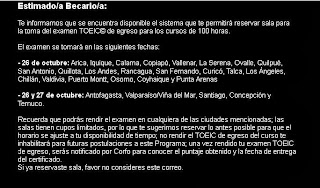Saludos en Inglés - Básico
Hello / Hi! Hola! Estas expresiones se utilizan informalmente para saludar. También suelen utilizarse los saludos según el momento del día: Good morning Buenos días Good afternoon Buenas tardes Good evening Buenas noches Good night Buenas noches (cuando te vas a dormir) How are you? Cómo estás? En ocasiones más formales se usa la variante How do you do? a lo que se responde de igual manera: How do you do? Fine, thanks. Bien, gracias. Let me introduce you to my friend Permítame presentarle a mi amigo It's nice to meet you Encantado de conocerlo too también What do you do? A qué te dedicas? Se usa para preguntar acerca de la profesión u ocupación de la otra persona I'm a student Soy estudiante. Notar que en inglés, a diferencia del español, es necesario usar el artículo 'a'. No es posible decir I'm student. What about you? Y tu? Esta expresión se aplica cuando se desea preguntar lo mismo que nos han preguntado. Puede decir...

